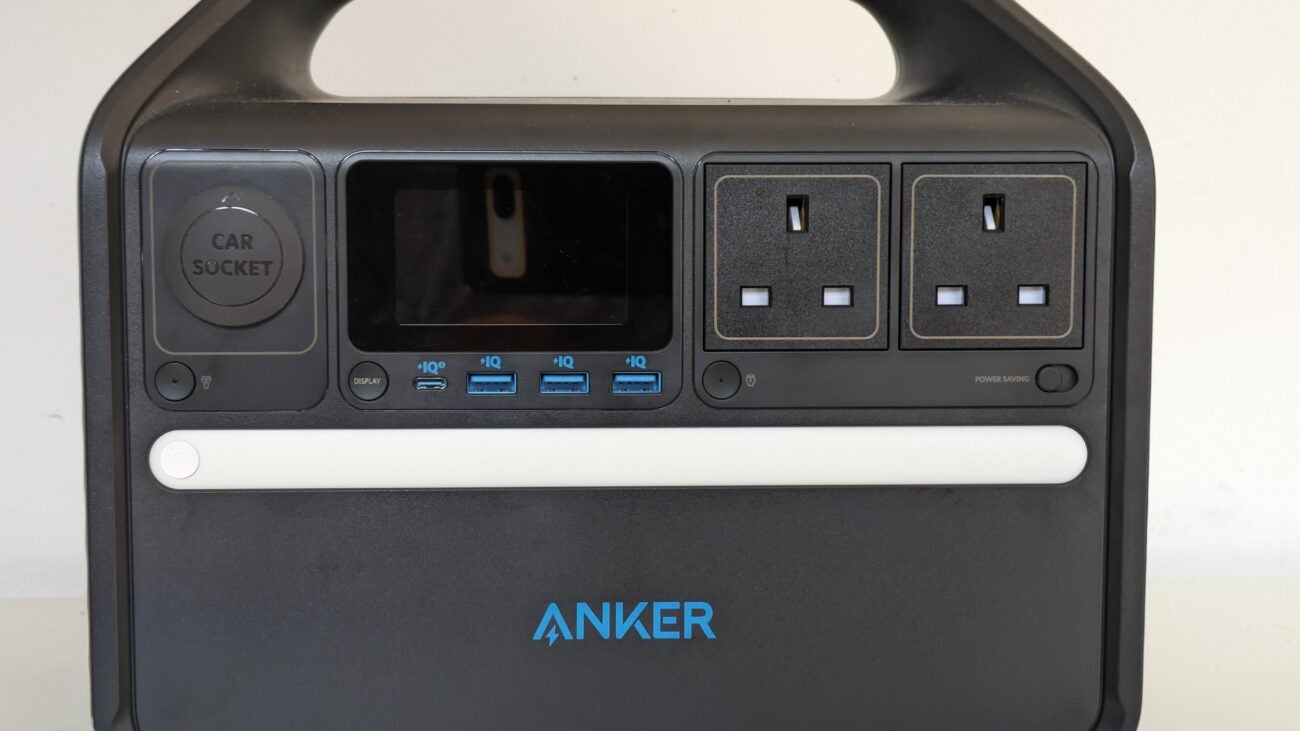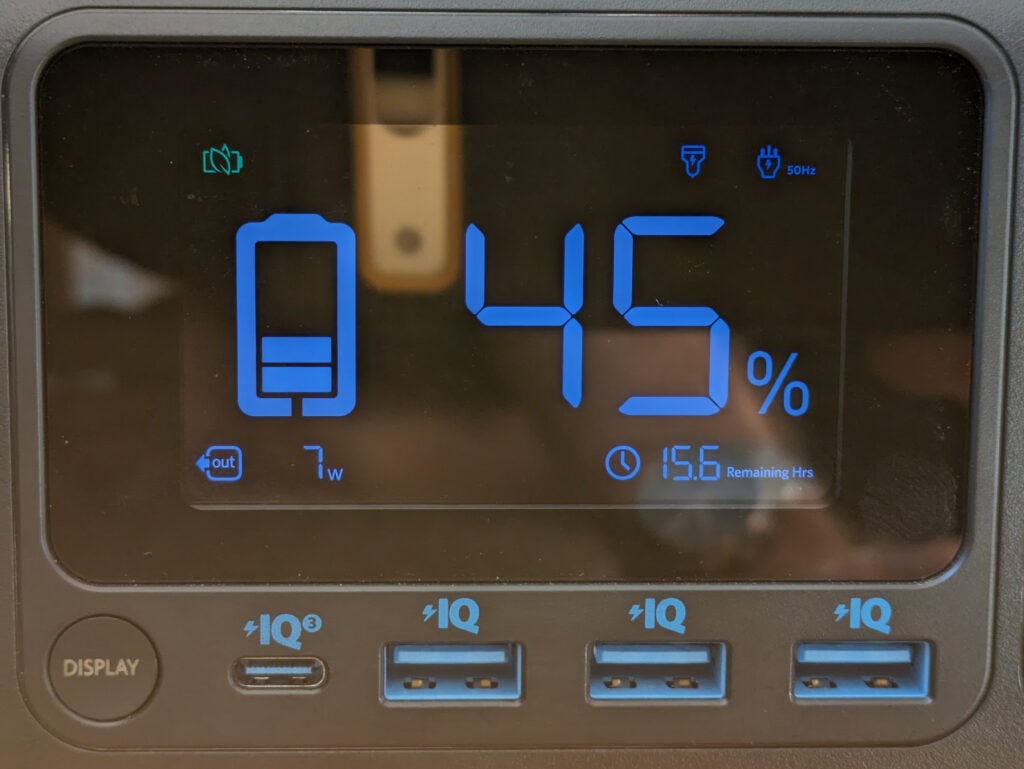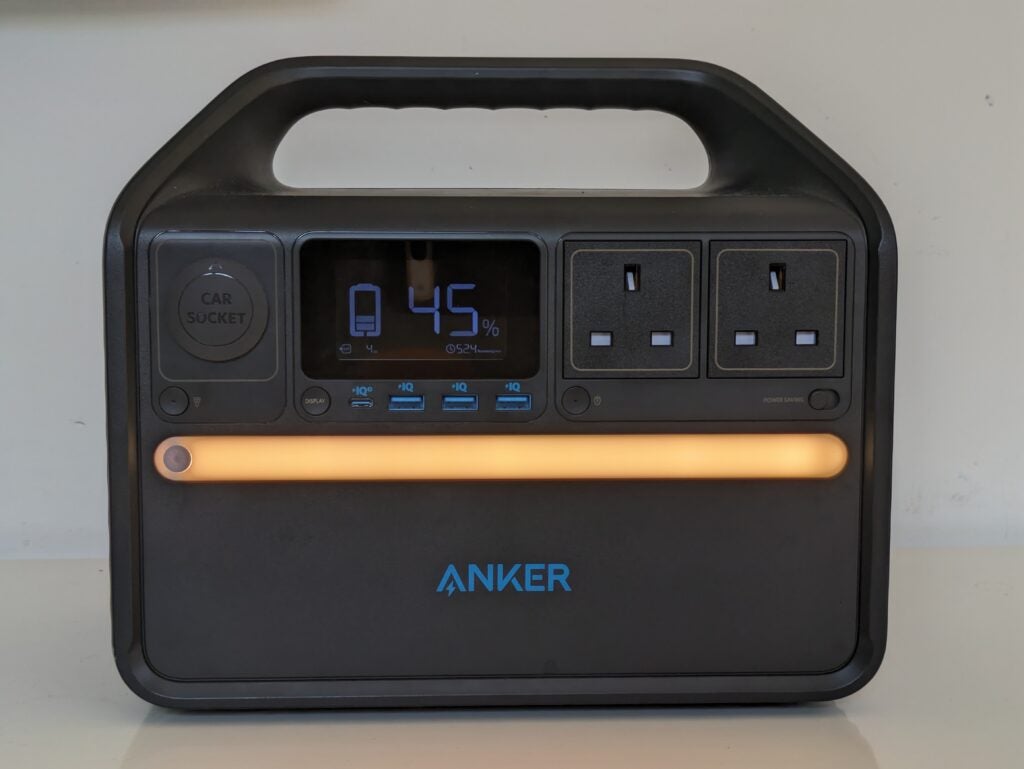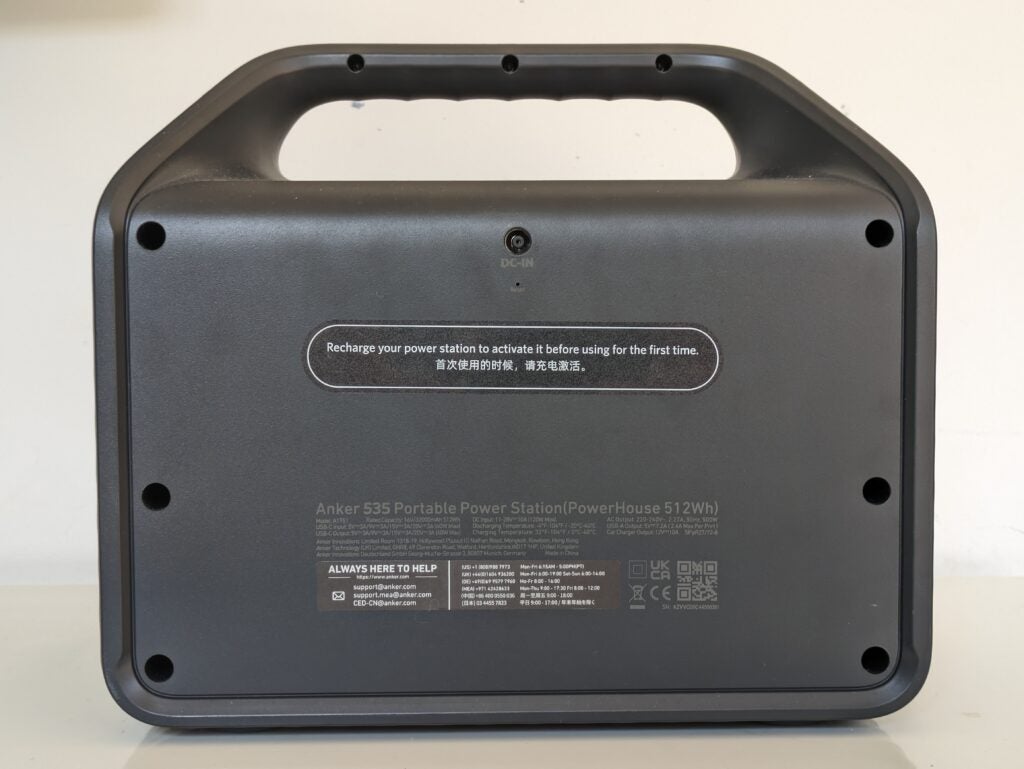Anker PowerHouse 535 Review
Ideal for lightweight backup power or a camping weekend




Verdict
The Anker PowerHouse 535 is a great choice for anyone needing a mid-range power station for camping trips, or light backup duties around the home. It strikes a strong balance between power storage and portability, offers flexible charging, and is one of the most efficient power banks we’ve tested. While it’s not suitable for heavy-duty appliances, it’s ideal for computers, phones, CPAP machines and other light-to-medium duty gadgets.
Pros
- Excellent functions, good range of ports
- Rugged, smart design
- Very efficient
Cons
- No bypass mode
Introduction
The Anker PowerHouse 535 is the second model up in Anker’s growing range of home power stations, but it shares many of the strong features found elsewhere in the lineup.
Perhaps most importantly, it’s built around a set of lithium iron phosphate (LFP or LiFePO) batteries, which offer a longer service life of 3000 or more recharge cycles, and are generally held to be more safe than other lithium cells. Anker says the PowerHouse 535 is designed for 10 years of operation, and it comes with a handy five-year warranty.
The 535 is about the size of a four-slot toaster, and it’s not especially heavy, making it fairly practical for camping trips or moving about the house. It offers flexible recharging, including from the sun or in a car, and has output ports to cover mains and USB-powered devices. It can store 512 watt-hours (Wh) of electricity – theoretically enough to power a low-energy light bulb for more than two days – and has a peak mains output of 500W. It’s not splashproof, however, and it could overheat in strong sunlight.
With a maximum power output about a quarter of a typical washing machine or dishwasher, the 535 won’t help you do laundry in a power cut. However, it’s enough to handle even relatively powerful PC and monitor combinations, CPAP machines, or other low to medium power gadgets. It’s not bad value at its full price of around £500, but at the time of writing we frequently saw it discounted below £400.
Design and features
- Rugged and smart with a decent screen
- Good selection of ports and functions
- Thoughtful design and layout
The Anker PowerHouse 535 looks a bit utilitarian, but it feels nicely designed and made. On top it has a thick handle, while the bottom’s large rubber feet help keep it where you put it. There are vents at each side, and just a lone power input port at the back – most of the features are on the front panel.

This power station offers two UK mains sockets, both controlled by the same on/off button and both sharing a combined 500W maximum output. There’s also a 12V car power socket offering up to 100W, plus four USB sockets and a light. That’s not a bad selection, but I’ve a minor quibble with the choice of three USB-A ports – each rated at 12.4W – and only one 60W USB-C output. More and more devices are adopting USB-C, so I’d prefer to see at least two of these ports.
I’ve no complaints about the large mono screen, which shows the battery charge at a glance, along with the rate at which it’s charging or discharging, and how long either is likely to take. This also has indicators showing when the USB ports are providing power, and whether the power-saving mode is activated. This monitors the load on the mains and car power sockets, switching them off automatically if it remains at a low figure – it’s important to disable it if you’re using the 535 as a backup power source for essential equipment.

I particularly like this power station’s LED strip light, which gives off more than enough soft light to dispel shadows when camping with kids, or prevent barked shins in a power cut.
It only has one brightness level, which consumes 4W, but you can also put it in an emergency mode which flashes ‘SOS’ in Morse Code. At least, it’s meant to – in fact its dot-dot-dot, dash-dash-dash spells a rather more nonchalant ‘SO’.

Charging
- Charge from mains, car or the sun
- Maximum 180W input
- No pass-through mode
This power station offers a great deal of flexibility when it comes to charging. You can use the supplied 120W AC adaptor to fully charge it within about five hours, or connect a USB-C charger to the USB-C output port, which doubles up as an input. Combining these lets you charge at a maximum 180W, which gets the PowerHouse 535 up to 80% charge in about two and a half hours.

You’ll also find a car adaptor in the box. This again lets you fully recharge the 535 in about five hours, which could be handy if you’ve got a long drive between camping sites. Finally, you can connect up to 120W of solar power – indeed you can buy the 535 bundled with a 100W panel, in which case it’s called the Anker 535 Solar Generator.
There are some limitations. Mains, car and solar charging all use the single DC input port at the back, so you can’t combine them for a quicker recharge. You can, however, supplement any of them with a USB-C input. More significantly, the reliance on an external AC adaptor keeps the 535 quite compact, but it means that there’s no pass-through or bypass mode, which would, for example, allow it to provide 500W of mains power to its sockets while still recharging its battery. It will happily provide some power while charging, but if the total load goes over 120W it’ll need to draw on battery power, and the battery will ultimately run down.

In practice this may not be as much of an issue as it is with the entry level PowerHouse 521, which has a more restrictive 65W adaptor. Most laptops and some computer/monitor combinations have an average power consumption below the 535’s 120W input, meaning it will remain charged overall if it’s connected in series with them. If you are thinking of using it for backup power, do check the equipment you’ll be connecting – and be aware that there’s no alarm to warn you when the 535’s battery is nearly empty.
We test the amount of energy needed to fully recharge a power station. It took just 574Wh to fill up the Anker PowerHouse 535 which, assuming its 512Wh battery went from fully exhausted to fully recharged, equates to 89% efficiency. That’s the best performance I’ve yet recorded. Interestingly, I used a USB power meter to measure how much electricity it took to recharge over USB. The result, 510Wh, equates to almost 100% efficiency, but of course this figure doesn’t allow for the losses in the AC adaptor I was using to provide USB power.
Performance
- Rock-solid power output
- Excellent efficiency
- A little noise, even when barely working
I always try to test power banks at their maximum rated level, which can be rather demanding – some prove unstable and may even shut down. Not so the Anker PowerHouse 535, which appears easily capable of meeting its specifications. When discharging its maximum 500W of AC power, it remained stable and relatively cool until its batteries were fully discharged, at which point it had supplied 420Wh, according to my mains power meter.
I usually test a power bank beyond its specification, which I don’t recommend you try as it could cause overheating or damage. The 535 was able to provide a constant 600W for just over a minute, before shutting itself down. I also tested the 535 with lighter loads. At both 200W and 300W, it provided more than 440Wh from a full charge.
Power stations never deliver their full rated capacity, particularly when providing AC power, which has some overheads. With this in mind I retested the 535’s USB output, but got a similar total (440Wh) to my other tests. To try and put this in perspective, it’s enough to fully recharge a family of four’s mobile phones about four times.
My measurements show that the PowerHouse 535 is very efficient, typically able to supply more than 85% of the energy stored in its battery. However, as this test assumes the battery goes from fully charged to fully discharged, it’s more accurate to look at a round trip, which simply compares the electricity I put in with what I was later able to take out. The 535 managed a round-trip efficiency of 78%, meaning for every 10W I put in I got almost 8W out. Again, that’s one of the best figures I’ve measured.
My final test was to connect the 535 to my home office equipment and simulate a power cut. Because there’s no pass-through mode, this power station is effectively constantly providing backup power, so there’s no switchover time and no danger that sensitive equipment would be disturbed in a blackout. As expected, turning the power on and off caused no problems with my computers, NAS or monitors.
As you’d expect, the Anker PowerHouse 535 has fans to help keep things cool when it’s working hard. These rarely get loud enough to intrude, but they do run almost constantly in the background when it’s supplying AC power. I also noticed a very quiet ticking noise, but that was only audible with my ear close to the device.
Some power banks offer better value than others – we calculate a comparison by dividing their price by the amount of electricity they can store over their lifetime. In 3000 full charge cycles the Anker PowerHouse 535 would store 1536 kilowatt hours (kWh). At its £499 SRP that’s equivalent to 32.5p per kWh. Buy it when discounted and it could be as little as 26p/kWh – exceptionally low for this class of supply.
Latest deals
Should you buy it?
You need a mid-range power station for camping
The Anker PowerHouse 535 is ideal if you need a pokey power supply for a weekend’s camping, or a solid backup for important low-power equipment
You need backup power for demanding electronics
With limited storage and no pass-through mode, it’s not ideal for backing up more demanding devices
Final Thoughts
The Anker PowerHouse 535 may be relatively small and light, but it’s a well-engineered power station, capable of impressive performance and efficiency, making it a great choice for those that need power on the go.
Its LFP batteries mean it should also last, even if used daily for backup power. The lack of passthrough power may limit its use in some scenarios, in which case the Bluetti AC60 (which can have its storage expanded) may be a better choice.
How we test
We test every battery station we review thoroughly over an extended period of time. We use standard tests to compare features properly. We’ll always tell you what we find. We never, ever, accept money to review a product.
Find out more about how we test in our ethics policy.
We test with a variety of devices to see how long the battery will last.
We test different charging methods to see how quickly the battery can be topped up.
FAQs
The PowerHouse 535 is a smaller power bank, with a lower maximum power output, and less storage. While it can output a maximum 500W of AC power, the PowerHouse 757 (now rebranded to the Anker SOLIX F1200) can supply up to 1500W. While the F1200 stores 1229 Watt-hours (Wh) of electricity, the 535 only stores 512Wh.
It stores 512Wh. That’s just over half a kilowatt-hour.








